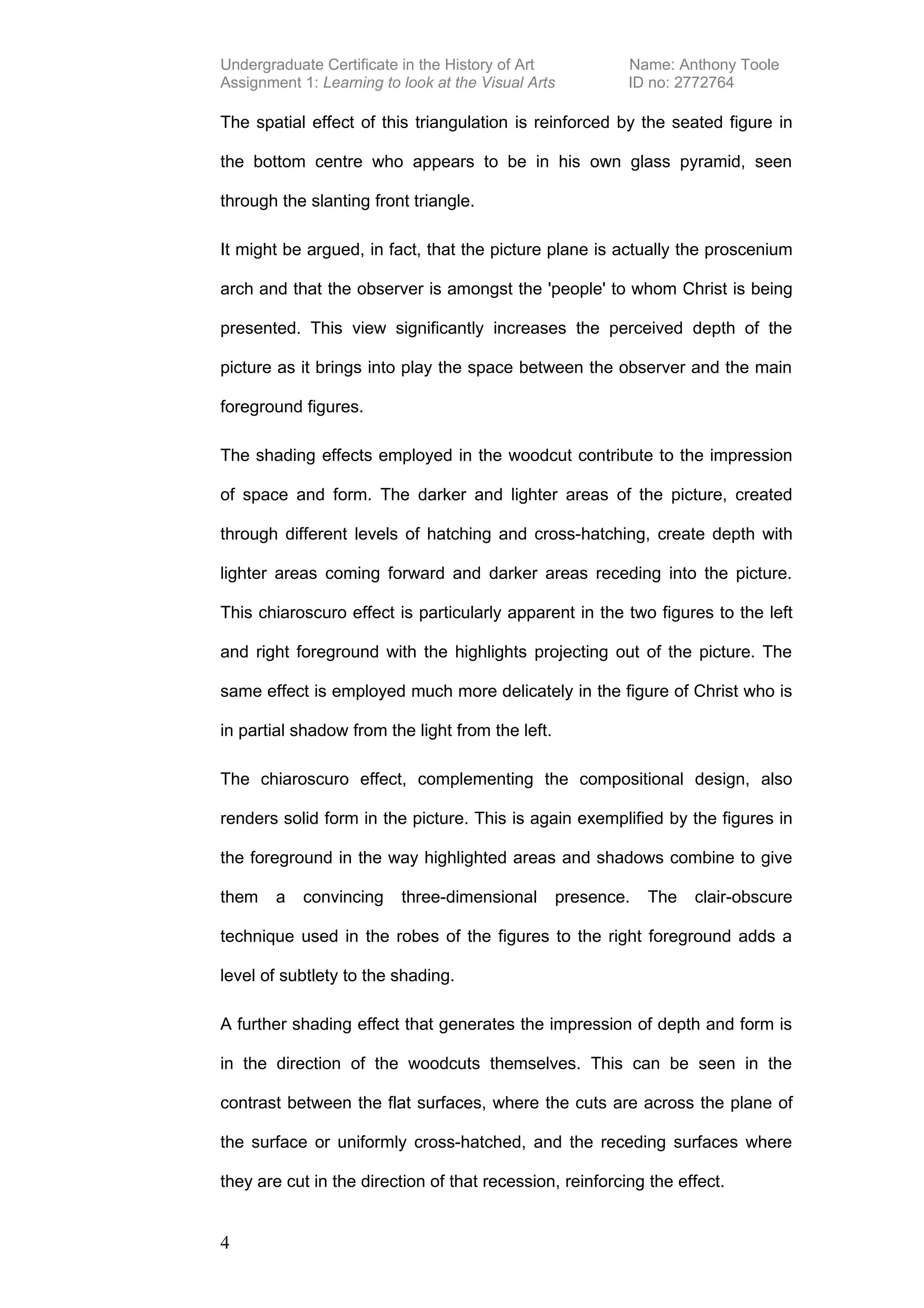The document provides an in-depth analysis of Albrecht Dürer's 1511 woodcut "Ecce Homo". It examines the compositional elements, use of linear perspective and shading techniques to create a sense of depth and form. Key aspects include the use of verticals, horizontals, diagonals, circles and nested golden sections to structure the composition. Dürer employed various tonal techniques like hatching and cross-hatching to represent space, atmosphere and convey the serious context of Christ's presentation to the people prior to his crucifixion. The work was part of Dürer's influential "Small Passion" series published in 1511 as a devotional book.










